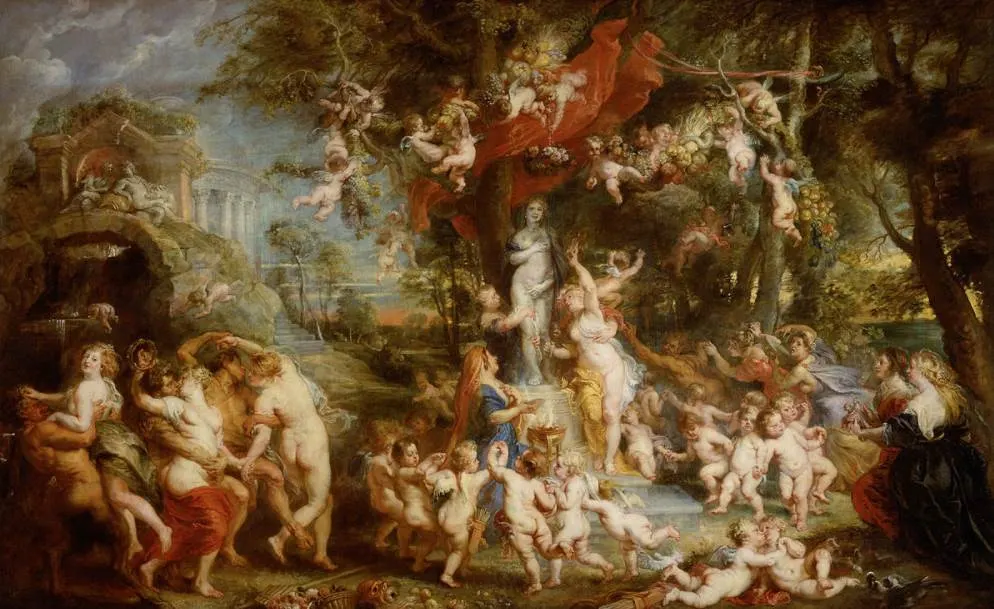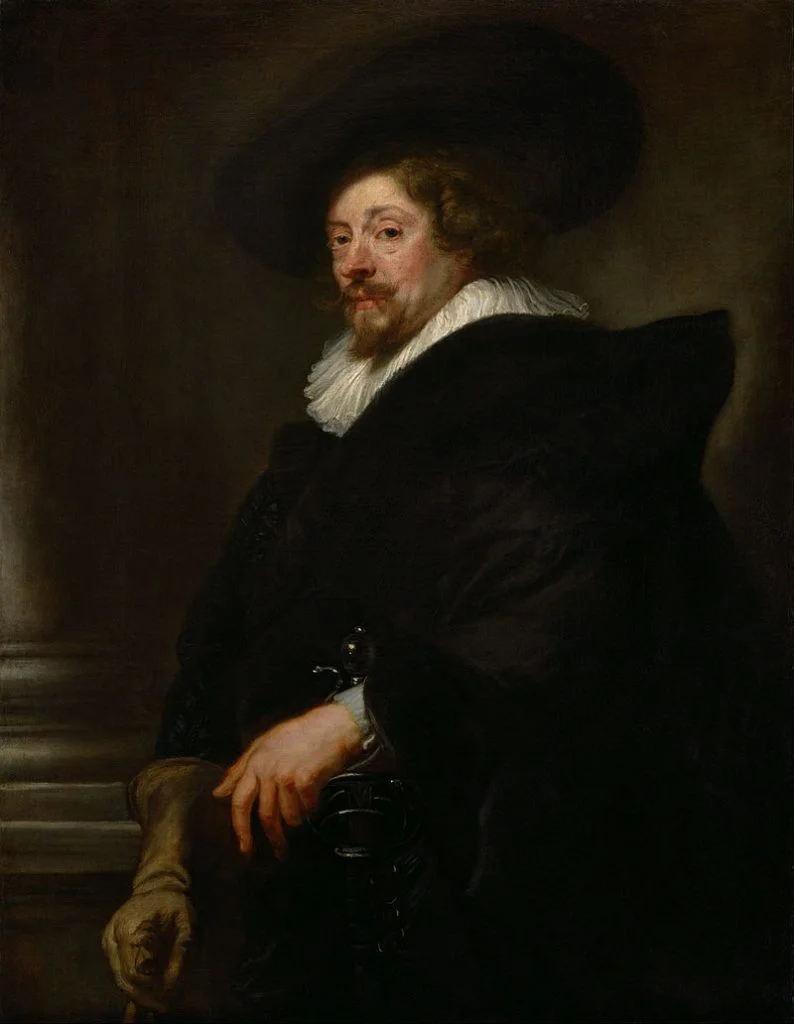When you think about paintings of voluptuous women in overly idyllic and exuberant settings, then the paintings of Rubens come to mind.
The Great Flemish artist can be described as one of the most distinctive artists of the Baroque era because of this.
Let’s take a closer look at some of the most interesting facts about “The Feast of Venus.”
It’s one of the prime examples of the style that made Peter Paul Rubens (1577-1640) one of the most sought-after artists in Europe in the first half of the 17th century.
1. It was painted during the final decade of the artist’s life
Peter Paul Rubens was a painter and diplomat and is considered to be one of the most influential artists of his time. It’s clear that the many travels during his lifetime, often involving both diplomatic missions and painting assignments, took a toll on the artist.
That’s why he took it a bit easier during the final decade of his life. He married a young girl named Helena Fourment after his first wife died in the late 1620s and eventually bought a castle in the area of Brussels in 1635.
The Feast of Venus was painted shortly after he had moved from Antwerp to this castle known as “The Steen,” between 1635 and 1636. Just like many of his other works from this period, it was painted for his collection rather than for a patron.

2. It depicts the artist’s version of an ancient Roman festival
The Feast of Venus is a reference to an ancient Roman festival called “Veneralia.” This festival was held on April 1 (this is not the original of April fools) and was dedicated to both Venus Verticordia and Fortuna Virilis.
The main activity during this festival revolved around the ritual bathing and adorning of the statue of Venus by Roman women. This statue was the one considered to be the most “pudica” or “sexually pure,” and the act of the women was to cleanse their bodies of impurity.

In the world of art, “pudica” is a reference to a type of statue depicting the goddess Venus in which she takes on a certain pose. She is seen covering her breasts and private area as she is leaving a bath. This became a reference to purity during this festival.

3. Rubens was inspired by a Titian painting that he once copied
One of the artist’s inspirations for this painting was a Titian painting that he was very familiar with called “The Worship of Venus” (1518-1519). He copied this work of the famous Italian artist in 1635, around the same time that he produced The Feast of Venus.
Just like the work of Tiziano Vecelli (1490-1576), Rubens included a large number of Cupids who appear to be shooting each other with wings of love as they are generally having a good time together. This was mentioned
The Renaissance artist was inspired to paint his version of the Roman festival by a work from a Greek sophist (teacher) named Philostratus of Lemnos (190-230 A.D.)
This work was called “Imagines” and described a series of paintings that presumably once hung in a 3rd-century villa in the area of Naples, southern Italy.

4. He was also inspired by a Roman poem that influenced many artists
Titian’s painting wasn’t the only source of inspiration for Rubens to create this overly dramatic and exuberant party scene representing an ancient Roman festival. He was also inspired by a less-known work of a Roman poet.
The most famous work of Roman poet Ovid is Metamorphoses, the inspiration of countless works of art. he also wrote a work called “Fasti” or “The Calendar” around 8 A.D. He presumably abandoned this work when he was banished for unknown reasons by Roman Emperor Augustus.
One section of this work described in detail what happened during the festival, including the ritual bathing under myrtle branches and the offerings of incense to Fortuna Virilis to purify women in the eyes of men.
5. The entire composition revolves around the statue of Venus Verticordia
The entire painting revolves around the statue of Venus Verticordia in the center. She is depicted in the typical pudica pose and is being bathed and adorned, just like the description in Ovid’s poem Fasti describes.
Rubens didn’t shy back from integrating a large number of figures, including nymphs, satyrs, and countless Cupids who appear to be dancing around the statue. Yes, this is the epitome of the style of the Flemish Baroque master.

6. The artist’s young wife served as a model for one of the nymphs
Many of the paintings by Rubens dating back to the 1630s depict his young wife, Helena Fourment. She was only 16 years old when she married the 53-year-old artist in 1630. Equally remarkable is that she was the niece of his first wife Isabella Brant who passed away in the year 1626.
Some examples are “The Three Graces” (1638) and “The Judgement of Paris” (1636) both in which the young woman can be seen.
In this particular painting, she appears as one of the nymphs who are flirting with the satyrs in the bottom left corner of the painting in front of the grotto. This is a clear symbol of lust.

7. How big is The Feast of Venus by Peter Paul Rubens?
Just because Rubens painted works for his pleasure, including multiple landscapes in the area around his newly acquired castle such as “View of the Stee in the Early Morning,” doesn’t mean he held back on the size of these works.
His technique featuring bold brushstrokes to increase the dramatic effect of his paintings can’t shine in small paintings as well, so that makes sense.
The feast of Venus has dimensions of 217 × 350 centimeters (85 × 140 inches).
8. Where is the painting located today?
Little is known about what happened to the painting in the decades after the artist passed away in 1640. It was part of the Imperial Collection of Prague, held in Prague Castle, in 1685.
From here it moved to Vienna in the year 1733 and eventually became part of the collection of the Kunsthistorisches Museum, the most famous museum in Austria’s capital, where it still resides today.

